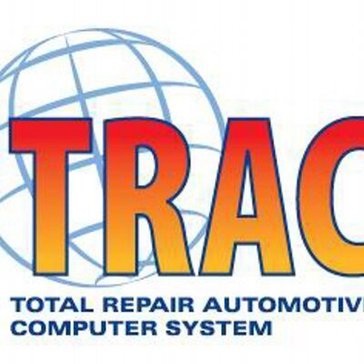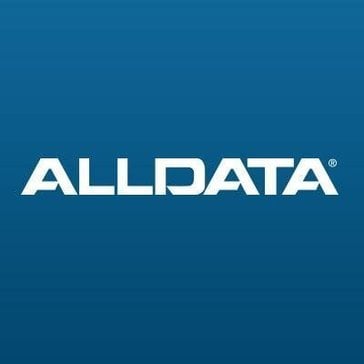Description

MIR-RT

NAPA TRACS
Comprehensive Overview: MIR-RT vs NAPA TRACS
MIR-RT and NAPA TRACS are both notable software solutions used within specific industries to improve productivity, efficiency, and management capabilities. Here's a detailed look at each, together with their primary functions, target markets, market share, and differentiating factors.
a) Primary Functions and Target Markets
MIR-RT:
- Primary Functions: MIR-RT is a Maintenance Information System designed to streamline maintenance operations in industrial settings. Its primary functions include work order management, preventive maintenance scheduling, inventory control, equipment tracking, and real-time monitoring of maintenance tasks.
- Target Markets: It targets industries such as manufacturing, utilities, oil and gas, and other sectors that require robust maintenance operations. Enterprises looking to minimize downtime and optimize their asset management processes are ideal users for MIR-RT.
NAPA TRACS:
- Primary Functions: NAPA TRACS (Total Repair Shop Management System) is designed specifically for automotive repair shops. Its functions encompass customer relationship management, estimating and invoicing, parts ordering, labor tracking, and integration with national parts databases.
- Target Markets: This product targets automotive repair and service centers, ranging from independent mechanics to larger service chain operations. It aims to enhance shop productivity and improve customer service by streamlining daily operations.
b) Market Share and User Base
MIR-RT:
- As a niche software primarily used in industrial maintenance, MIR-RT commands a specific segment of the market, particularly among mid to large-scale industrial enterprises. Its market presence is significant among companies that prioritize detailed maintenance scheduling and equipment lifecycle management. However, it is not as widely recognized outside of specialized industrial sectors.
NAPA TRACS:
- NAPA TRACS has a broader recognition within the automotive industry due to its association with NAPA, a well-known brand in auto parts and services. Its market share is stronger given the large number of automotive repair shops and its affiliation with NAPA's vast network. The user base includes both small independent shops and larger franchises, making it widely used across North America.
c) Key Differentiating Factors
-
Industry Focus:
- MIR-RT is tailored towards industrial operations, focusing on the maintenance of equipment and machinery critical to production lines.
- NAPA TRACS is specifically built for the automotive repair sector, with features that support the workflow and requirements of car service professionals.
-
Functionality Depth:
- MIR-RT offers extensive features for complex industrial machinery management, including detailed analytics and integration with industrial IoT devices for real-time data.
- NAPA TRACS provides comprehensive features for customer interaction and shop management, including direct integration with NAPA's parts databases and automotive-specific accounting features.
-
Integration Capabilities:
- MIR-RT is designed to integrate with other industrial systems, such as ERP and IoT platforms, allowing it to fit seamlessly into existing industrial IT infrastructures.
- NAPA TRACS integrates predominantly with automotive databases and systems pertinent to parts ordering and vehicle information management.
-
Scalability:
- MIR-RT is scaled for larger industrial settings, capable of handling extensive industrial operations with a large number of assets.
- NAPA TRACS scales from single-shop operations to multi-location service enterprises, offering flexibility for businesses of various sizes within the automotive sector.
In summary, MIR-RT and NAPA TRACS cater to distinct industries with specific needs in maintenance and repair operations. Their functionalities, market penetration, and unique features reflect their adaptation to the demands of their respective markets.
Contact Info

Year founded :
Not Available
Not Available
Not Available
Not Available
Not Available

Year founded :
1989
+1 800-659-3710
Not Available
United States
http://www.linkedin.com/company/officialnapatracs
Feature Similarity Breakdown: MIR-RT, NAPA TRACS
As of my last update, MIR-RT and NAPA TRACS are both software solutions designed to assist automotive repair shops with their day-to-day operations. Here's a breakdown of their feature similarities and differences:
a) Core Features in Common
Both MIR-RT and NAPA TRACS are robust systems providing a range of functionalities essential for automotive repair shops. Common core features include:
-
Inventory Management: Both systems offer tools to manage parts inventory, including tracking stock levels, reordering, and managing vendors.
-
Work Order Management: They enable the creation and tracking of work orders, allowing users to document services performed, parts used, and the time taken for repairs.
-
Customer Relationship Management (CRM): These platforms help manage customer information, service history, and communication records.
-
Invoicing and Billing: Features for generating estimates, converting them into invoices, and managing customer payments are available in both systems.
-
Reporting and Analytics: Both offer reporting tools to analyze business performance, sales trends, inventory levels, and other key metrics.
-
Appointment Scheduling: Capabilities to schedule customer appointments, view calendar availability, and manage shop workflow.
b) User Interfaces Comparison
-
MIR-RT:
- Typically characterized by a streamlined, user-friendly interface that focuses on ease of navigation and quick access to essential functions.
- It emphasizes visual clarity with dashboards that are straightforward and easy to customize, catering to the fast-paced environment of repair shops.
- Integration capabilities might be displayed prominently, allowing users to connect with third-party apps seamlessly.
-
NAPA TRACS:
- Known for a more traditional interface that offers comprehensive functionality but might have a steeper learning curve than MIR-RT.
- The UI might be considered more detailed or packed with information upfront, accommodating users who require access to a broader range of data at a glance.
- It is intuitively designed to integrate with other NAPA products and services, enhancing its ecosystem connectivity potential.
c) Unique Features
-
MIR-RT Unique Features:
- Real-time Communication Tools: MIR-RT might offer more advanced integrated communication tools for intra-team messaging or customer communications within the platform.
- Mobile Access: More extensive features could be available for accessing the system via mobile devices, enabling shop managers and technicians to work remotely or while moving around the shop floor.
-
NAPA TRACS Unique Features:
- NAPA Integration: Offers deeper integration with NAPA’s extensive catalog and direct ordering system, which can significantly streamline parts management for shops that are part of the NAPA network.
- Robust Vendor Management: Extensive tools for managing multiple vendors, benefiting large operations with diverse supply chains.
Both systems aim to enhance operational efficiency in automotive repair settings, but while they share core functionalities, the differences in UI approach and unique features can significantly impact user experience and suitability depending on specific business needs. Always consider a trial or demo to see how each solution fits with your team's workflow and preferences.
Features

Seamless Integrations
User-Friendly Dashboard
Comprehensive Reporting
Secure Environment
Real-Time Data Processing

Customer Management
Inventory Management
Reporting and Analytics
Invoicing and Payment
Integration Capabilities
Best Fit Use Cases: MIR-RT, NAPA TRACS
To effectively assess the use cases for MIR-RT and NAPA TRACS, it's essential to understand each product's core functionalities and how they cater to different industry needs and business sizes.
MIR-RT
a) Best Fit Use Cases for MIR-RT
For What Types of Businesses or Projects is MIR-RT the Best Choice?
-
Manufacturing and Industrial Companies: MIR-RT (Maintenance, Inspection, and Repair in Real-Time) is particularly suited for industries with heavy machinery and complex production systems where real-time monitoring and upkeep are critical. This includes automotive, aerospace, and heavy equipment manufacturing industries.
-
Facilities Management: Companies that manage large facilities or campuses, such as universities, hospitals, or corporate complexes, benefit from MIR-RT for maintaining infrastructure, ensuring safety, and optimizing operations.
-
Utilities and Energy Sectors: Power plants, oil and gas industries, and renewable energy farms can leverage MIR-RT to ensure the consistent operation of their assets and reduce downtime through timely maintenance and inspections.
-
Transportation and Logistics: Managing fleets of vehicles, whether for public transportation, shipping, or courier services, can be optimized using MIR-RT’s capabilities in real-time tracking and maintenance scheduling.
NAPA TRACS
b) Best Fit Use Cases for NAPA TRACS
In What Scenarios Would NAPA TRACS be the Preferred Option?
-
Automotive Repair Shops: NAPA TRACS is designed primarily for automotive repair businesses, offering solutions for managing inventories, customer service, and invoicing, thus streamlining shop operations.
-
Small to Medium-Sized Garages: Given its specific framework, NAPA TRACS fits well with small to medium-sized auto repair facilities due to its cost-effectiveness and comprehensive features tailored for shop management.
-
Franchise or Chain Repair Services: For businesses operating multiple locations, NAPA TRACS can provide centralized control over various outlets, ensuring consistency in service, inventory management, and customer relations.
-
Retail Automotive Parts Businesses: Companies that focus on selling automotive parts can also benefit from NAPA TRACS due to its seamless integration with inventory management systems and ordering processes.
How These Products Cater to Different Industry Verticals or Company Sizes
-
MIR-RT caters to large enterprises across industrial and manufacturing sectors. Its capability to handle complex and massive systems with real-time data makes it ideal for larger companies with a significant focus on maintenance and operational efficiency.
-
NAPA TRACS is more aligned with small to medium-sized automotive businesses but can scale up for larger operations with multiple locations. It's focused on the retail and service aspect of the automotive industry, providing specialized solutions for inventory and customer management.
In conclusion, the choice between MIR-RT and NAPA TRACS largely depends on the industry sector and specific needs of the business. MIR-RT is a robust solution for industrial applications requiring real-time maintenance, while NAPA TRACS is ideal for automotive services focusing on shop operations and customer management. Each product offers a strategic advantage by catering to the unique needs of its target industries and company sizes.
Pricing

Pricing Not Available

Pricing Not Available
Metrics History
Metrics History
Comparing teamSize across companies
Conclusion & Final Verdict: MIR-RT vs NAPA TRACS
To provide a conclusion and final verdict for MIR-RT and NAPA TRACS, let's break down the analysis:
a) Best Overall Value
When considering all factors such as functionality, cost, ease of use, customer support, and adaptability, the product that offers the best overall value largely depends on the specific needs of the business using it. However, if we generalize:
-
MIR-RT might offer the best overall value for businesses that prioritize comprehensive reporting and inventory management, especially in industries that need strong and integrated field service capabilities.
-
NAPA TRACS could offer better value for small to medium-sized auto repair shops that require user-friendly interfaces, less complex setup, and strong support networks within the automotive industry.
b) Pros and Cons
MIR-RT Pros:
- Robust inventory and service management features.
- Strong reporting tools for detailed business insights.
- Integration capabilities with other enterprise systems.
MIR-RT Cons:
- Steeper learning curve for new users.
- Potentially higher setup and customization costs.
- Best suited for larger operations, which might overwhelm smaller businesses.
NAPA TRACS Pros:
- Easier setup and user-friendly interface.
- Excellent customer support tailored for automotive repair businesses.
- Cost-effective for small to medium-sized operations with less complex needs.
NAPA TRACS Cons:
- May lack advanced features required by larger businesses.
- Limited customization options compared to more comprehensive software solutions.
- Features might not cater to industries beyond automotive repair.
c) Recommendations
For Users Deciding Between MIR-RT and NAPA TRACS:
-
Assess Business Needs:
- Determine the scale of your operation and specific feature requirements. If your business demands extensive inventory control and reporting capabilities, MIR-RT might be the better choice.
- For simpler, more straightforward operations primarily within the auto repair industry, NAPA TRACS is likely sufficient.
-
Budget Considerations:
- Evaluate the initial and ongoing costs associated with each platform. MIR-RT may require more significant investment upfront.
- Consider long-term scalability and potential expansion of your business when calculating total cost of ownership.
-
User Experience:
- Consider the technical expertise of your team. If ease of use is crucial, NAPA TRACS is typically recognized for its intuitive interface.
-
Trial and Demos:
- Engage with trial versions of both products if possible. This real-world testing can provide valuable insights into which system aligns better with your workflow and processes.
By weighing these factors, businesses can make a more informed decision that aligns with their operational goals and resource capabilities.
Add to compare
Add similar companies



